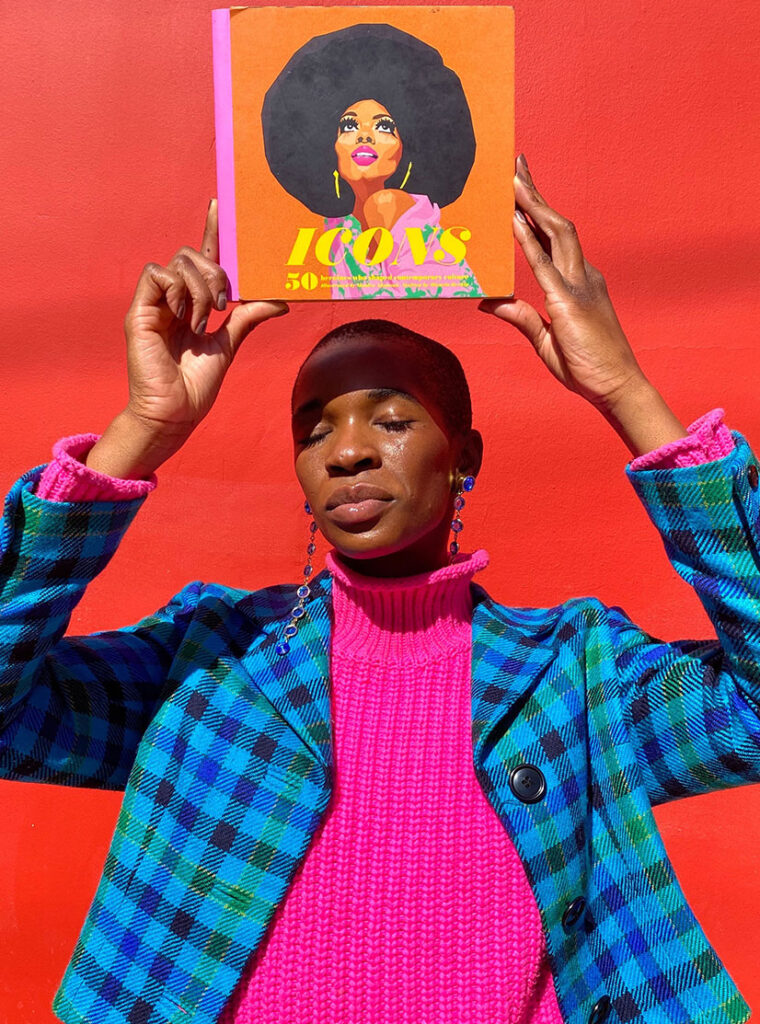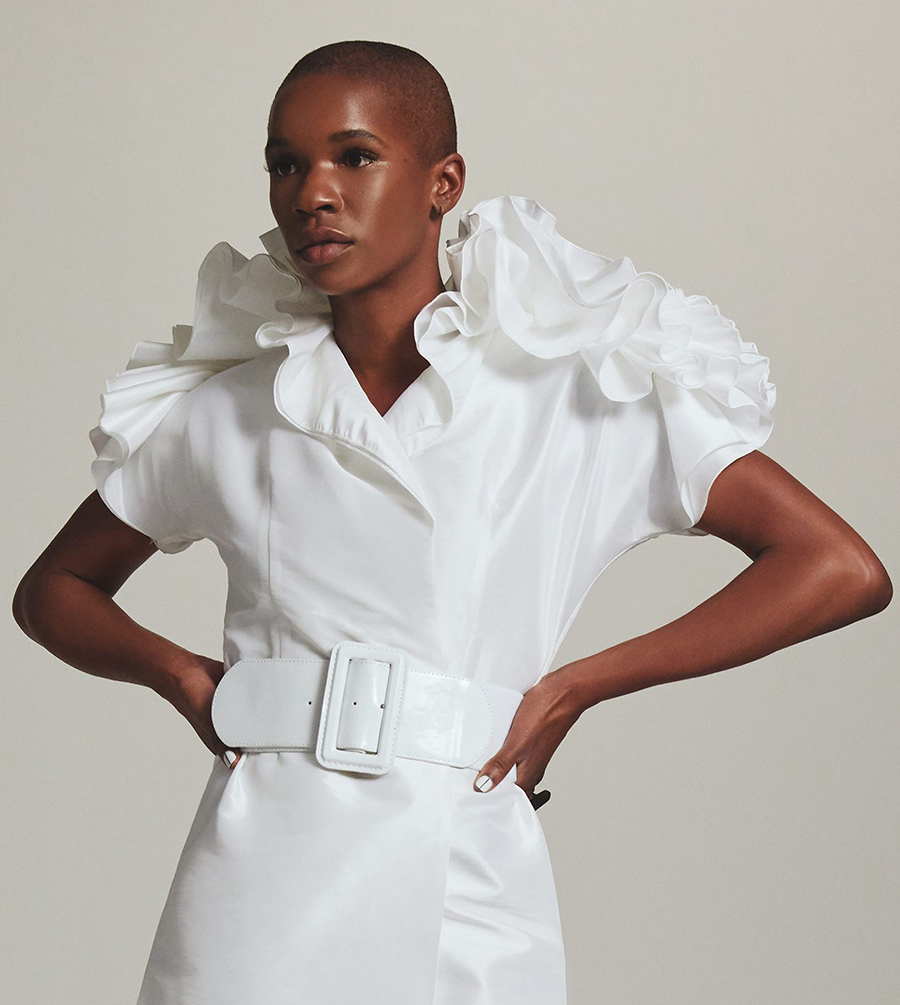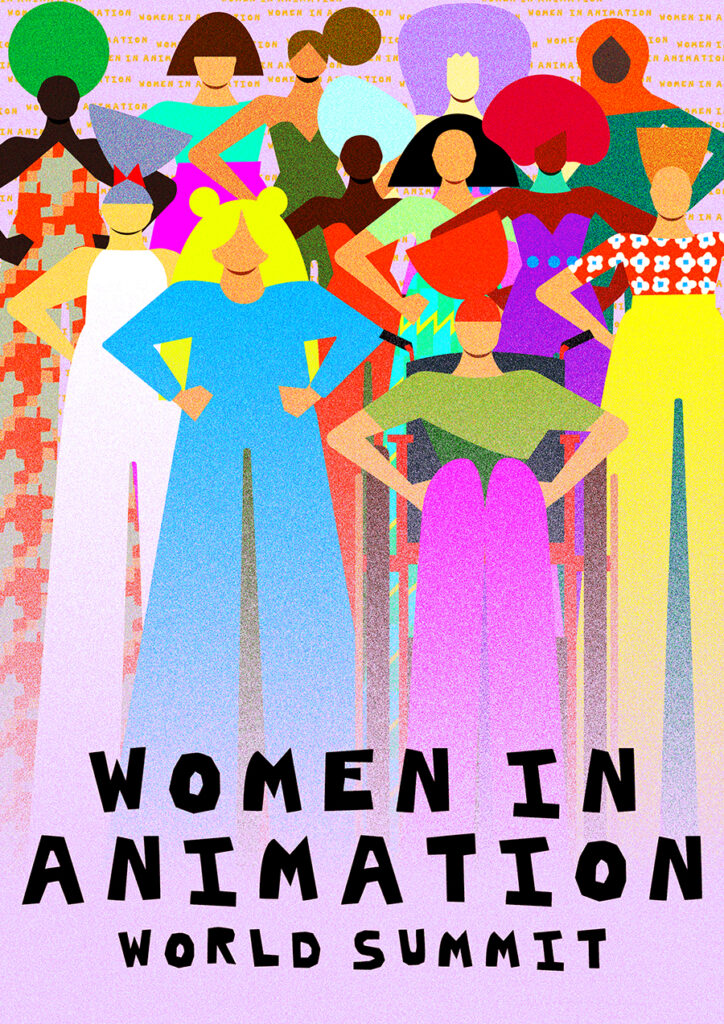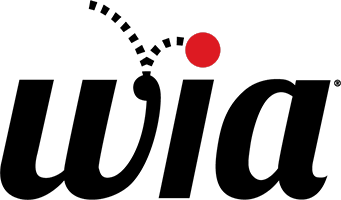SPOTLIGHT STORIES: Monica ahanonu
Interview conducted by Tracey Miller-Zarneke
WIA is honored that Monica Ahanonu agreed to create the signature art piece for the 2021 WIA World Summit at Annecy. Monica is a freelance illustrator based in Los Angeles who launched her artistic career at DreamWorks Animation but has since become an innovative and sought-after visionary in color theory, vector illustration and motion design for a wide variety of independent clients including Vanity Fair, Facebook, The New York Times, Samsung USA, Adidas, Salvatore Ferragamo and other noteworthy companies. She is renowned for her vibrant portraits and pop art pieces that draw people into learning about other cultures, industries and backgrounds, opening them up to her mindset that “just because you’re different from the people around you doesn’t mean you’re not beautiful.” Monica’s third illustrated book,ICONS: 50 Heroines Who Shaped Contemporary Culture, was released in February 2020.
After delivering her beautiful piece to WIA, Monica was kind enough to take time to share more of her life story and artistic journey with our membership.
Think back to the earliest moment in your life when you realized you loved creating art and please share it with us.
I probably realized I loved creating art much much later than I actually did truly love creating art, if that makes sense. I honestly think my love for creating started when I was in elementary school. It’s so terrible to say, but I used to rub pollen in my eyes (very allergic) so I could stay home from school and make my own little TV shows with my parents’ camcorder and draw my own magazines using spiral notebooks. I told my mom this a few years ago but it is true–I fully remember pretending I was feeling sicker than I was so that I could stay home and create something and not be sitting in school. In terms of realizing it while I was doing it, that came probably when I was in college. I was interning at DreamWorks Animation and was so inspired, motivated and encouraged by the various people that I met, I would actually (I am now realizing this is a trend) skip class so that I could spend extra days at the studio, attend recording sessions or learn from someone who was presenting that day. I came to notice that being surrounded by the other creatives and creating my art and playing with color late at night gave me energy, and the hours would fly by because I was so focused and fully enjoying what I was doing in the moment.
Did your family encourage you in your pursuit of art as a career?
My family was very encouraging of me doing what I was most interested in. They definitely were concerned in the beginning about me not being able to make a living and support myself, but each step of the way there was something there that would reassure them and me as well, as various activities I would engage in to keep myself learning and growing. I moved forward despite their concerns by reminding myself that this is what I really enjoyed doing and that if I didn’t put all of my efforts into it to succeed, I would at least know I had tried because if not, I would most likely regret never trying to do what I loved.
How was the process of shifting from studio employment to freelance for you? How do you feel working as an artist in one environment vs. the other?
Shifting from studio employment to freelance was a big learning process. I had to think differently about my finances and get used to my paychecks coming randomly throughout the month, but I also had to learn how to negotiate and hold onto my worth even if there were large companies coming to me that I wanted to work with. I think the biggest thing that helped me stay on track and keep on schedule was that I really love what I do and made sure to take on assignments that I actually wanted to do — or at least always having one project I am excited about that isn’t just for a paycheck so that I stay motivated to continue doing what I love. It has been such an incredible learning experience, and I am truly happy that I decided to give the freelance route a try. Specifically, what I like about working as a freelancer is the variety I have in my assignments and the variety in what my days look like and encompass. What I miss about working in a studio environment is having co-workers and people to walk down the hall to and bounce ideas off of or just take a break with. I miss that part of the environment the most because I love having people around me when I am working — I love feeling like I am part of a team and we are all working towards something larger together.
What, if any, adversities have you faced in your career or life in general, and how did they shape the artist you are today?
When I first started undergrad as an animation major at USC’s School of Cinematic Arts, I hadn’t really taken any drawing classes. I was accepted into the program based on the digital editing and minimal stop motion animation skills I had developed playing around after school. Not knowing how to draw by hand (or really draw at all) was very stressful for me in the beginning because I felt like I didn’t deserve to be in the program and that I wouldn’t be able to excel in this field. In the end, not having those intense drawing skills helped me create my style. Being that I couldn’t really draw well, I would simplify things in my head and create designs that were very minimal in an attempt to have to draw fewer lines to get my viewers to understand what I was drawing. This ended up being a strength and something I realized I loved — minimal art — and allowed me to focus on the other areas I was really interested in within the animation industry. This also allowed me to focus on color and work with color and get really good at color without the distractions of knowing how to draw too many details of an art piece. I think knowing very little in the beginning allowed me to focus on the few strengths I had and what I really enjoyed doing, which for me is design and color.
How do you keep your artistic spirit refreshed, even when under the pressure of production deadlines or life challenges?
I make sure to take time for myself by looking at visuals that inspire me such as fashion shows, vintage clothing and furniture. I also make sure to exercise because my mind tends to wander and relax while I am in the middle of a workout, which often helps me iron out details of a project that I may be stuck on.
Why is an organization like Women in Animation important?
Women in Animation is important because it allows women in the industry and those interested in the industry to see stories and be inspired and motivated by those who have come before them. It allows younger generations to see what’s possible and connect with women around the world who have similar interests or may have gone through the same struggles when starting out in this industry.
How did this assignment for WIA @ Annecy come to you, and how has it evolved?
Hayley Porter at Women in Animation reached out to me about my availability and interest. Being that I started my career within the animation industry, I was really excited to take this on. The process of getting the piece to this point started with a conversation of what we wanted to make viewers feel when looking at the piece, then making sure that everything would read correctly. I was given a lot of freedom on the style of my art which I really enjoyed and am very excited about the final piece we went with.
What message do you hope to convey through this art?
I want the various women in animation to feel represented, to feel empowered and feel like their voice and talents are an important part of this industry. It’s representing and reminding them of all the backgrounds, ideas and experiences that they bring to the stories that are told within the animation industry.
What advice do you have for young people looking at animation or other artistic industries as their career field?
I have given this same advice previously and want to share it here as well:
1. Send a lot of emails and do informational interviews. Reach out to people you admire, would like to work with, or are interested in learning from. Find mentors for the different areas of your life.
2. Meet everyone and don’t ever refuse a meeting. Pick their brains. You can learn so much from the people you meet even if they aren’t in your industry. Successful people always have something to offer you in some area of your life.
3. Use a planner or calendar and make lists. This allows you to see the gaps in your schedule where you can fit time to work on your side hustle and passions outside of school or a full-time job.
4. Know your industry. Research the industry you want to get into: the steps it takes to get a job in that industry, the specific job(s) you want in that industry. Research what the day-to-day is like for someone doing the job you want and see if that’s a day-to-day lifestyle you would enjoy.
5. Keep yourself motivated by putting up quotes and affirmations around your living space or reminders in your phone that keeps you in a positive mindset throughout your day.
6. Diversify your friends not just by race, but by age. You learn so much from people that have either gone through what you are going through or younger people who may be more knowledgeable about specific new technologies or trends taking off.
7. Be mindful of what you consume visually every day. Follow people and things on social media that inspire you and motivate you. If you feel something isn’t serving you mentally or lifting you up mentally, just hit that unfollow button.
8. Do what makes you excited, do what you are excited about and interested in that very moment and if that interest changes, that’s okay. If you are really passionate about something, you will focus on it and become very good at it faster than something you are forcing yourself to do.
Any other thoughts or advice you wish to share with our membership?
I think the above really summarizes the advice I want to give. Something I always try to remind people is that just because you may not look or think the same way as those around you, doesn’t mean you aren’t beautiful and that your point of view isn’t going to be valued.
WIA is grateful for Monica sharing her talent on behalf of the 2021 WIA World Summit, and also for sharing her story and perspective here to inspire others who are following their own artistic journeys.
You can see more of Monica’s work and learn more about her at the links below:
Website: www.mahanonu.com
Instagram: @monicaahanonu



